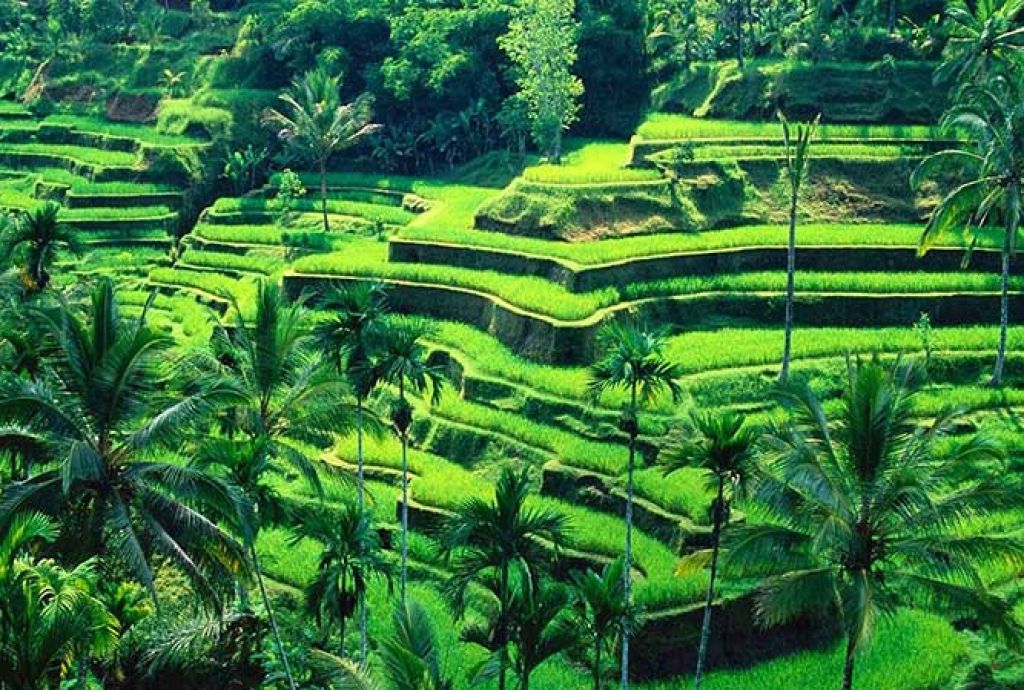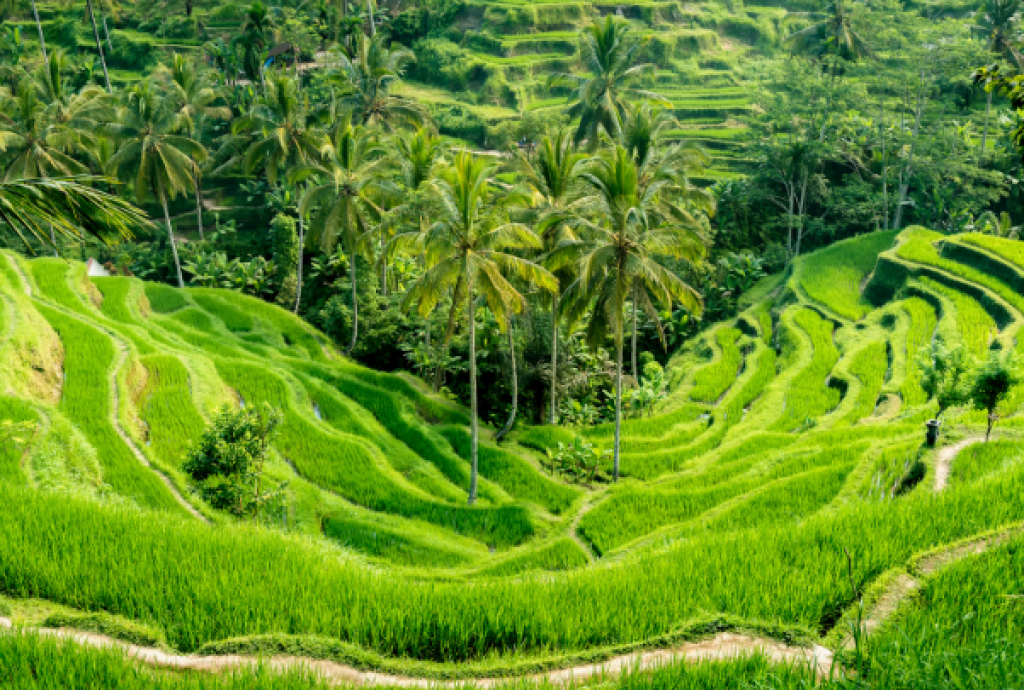
Why There Are No Rice Fields in Uluwatu & Bukit Peninsula?

Discover why rice terraces are absent from Bali’s Bukit Peninsula. From porous limestone and scarce water to cultural history, learn the fascinating reasons behind this agricultural anomaly.
Imagine cruising along Bali’s southern coastline, waves crashing against towering cliffs, endless beaches unfolding before you… yet not a single rice terrace in sight. If you’re puzzled by the absence of lush paddy fields on the Bukit Peninsula, you’re not alone. In this article, you’ll step into the shoes of a curious traveler and uncover the surprising blend of geology, climate, and history that makes this dramatic landscape rice‑field‑free.
Imagine waking up to Bukit’s sun‑bleached cliffs and the Indian Ocean at your doorstep—explore our hand‑picked luxury villas for sale in Uluwatu and make Bali’s dramatic coastline your every‑day view
Link 👉 https://bali-home-immo.com/villa-for-sale-uluwatu
1. The Limestone Karst: Nature’s Water Sponge
- Porous Bedrock: The Bukit Peninsula is composed almost entirely of uplifted limestone (karst). Rainwater instantly drains through cracks, rather than pooling in flat paddies.
- Insufficient Soil Depth: Over millennia, the thin layer of soil atop the limestone hasn’t had time to accumulate into the deep, fertile ground rice needs.
“Picture pouring water onto a sponge—it disappears, leaving the surface dry. That’s exactly why rice can’t stand on Bukit’s limestone.”
2. Rainfall Patterns and Water Scarcity
- Rain Shadow Effect: The central highlands of Bali cast a rain shadow over the south. The Bukit Peninsula receives significantly less rainfall than the island’s interior.
- No Natural Rivers: Unlike Bali’s rice‑rich valleys, Bukit lacks perennial streams. Without reliable irrigation sources, rice cultivation is nearly impossible.
3. Agricultural Traditions and Land Use
- Historical Land Focus: Balinese farmers traditionally planted rice where water was abundant—around the volcanic foothills and river valleys. Bukit’s poor yields steered locals toward dry‑land crops (cassava, peanuts) and fishing.
- Modern Tourism Boom: Over recent decades, hotels and golf courses have claimed prime Bukit real estate. Development priorities further cemented the absence of rice terraces.
4. Soil Chemistry and Fertility
- High pH Levels: Limestone leads to alkaline soils that lock away key nutrients (iron, phosphorus). Rice thrives in slightly acidic to neutral pH conditions absent here.
- Saline Intrusion Risks: Proximity to the sea can raise soil salinity, stressing any freshwater‑loving crops.
5. Alternative Farming Possibilities
Even without rice, enterprising farmers have found workarounds:
- Hydroponics & Greenhouses: Controlled environments mitigate soil and water issues.
- Drought‑Resistant Crops: Sorghum, millet, and certain fruits now flourish where rice cannot.
Conclusion & Takeaway
By now, you’ve discovered why the Bukit Peninsula stands apart from Bali’s famed rice‑terraced landscapes: its porous limestone, scant rainfall, challenging soil chemistry, and human choices have all played their part. Next time you gaze out at those dramatic cliffs and sun‑bleached fields, you’ll appreciate the hidden science and history behind this unique corner of the island.
Ready to delve deeper? Explore more about Bali’s varied terrains, or plan a visit to experience the contrast between Bukit’s rugged beauty and the emerald rice fields of Ubud!
Topic Categories
- All 348
- Uncategorized 6
- Bali Villa 27
- Bali Politics 6
- Bali News Update 7
- Bali Shopping 3
- Bali Tourism 48
- Bali Spirituality 2
- Bali Beauty and Fashion 0
- Bali History and Culture 23
- Bali Property Appraisal 1
- Bali Property Financing 3
- Bali Property Insurance 1
- Bali Property Management 5
- Bali Environment 11
- Bali Pets 2
- Bali Health and Wellness 14
- Invest in Bali 23
- Bali Local Services 5
- Bali Food & Dining 12
- Bali Home Improvement & Design 6
- Bali Legal Tips 7
- Bali Neighborhood Guides 11
- Bali Property Market Trends 14
- Bali Property Advice 60
- Bali Attractions 23
- FAQ 2
- Living in Bali 44
Topic Tags
- All 348
- Uncategorized 36
- Villa for sale Umalas 3
- Villa for sale Kerobokan 3
- Villa for sale Oberoi 3
- Villa for sale Pererenan 3
- Villa for sale Batu Bolong 3
- Villa for sale Berawa 3
- Villa for sale Sanur 3
- Villa for sale Seminyak 3
- villa for sale Ungasan 3
- villa for sale Jimbaran 3
- villa for sale Nusa Dua 3
- villa for sale Pandawa 3
- Kerobokan 3
- Bali market report 1
- Villa for sale Canggu 5
- Villa for sale Uluwatu 5
- Bali Rentals 2
- Buying Process 6
- Labuan Bajo 0
- Bali Hospital 3
- Bali School 3
- Bali Beach 11
- Co-working Space 4
- Petitenget 3
- Australia 0
- China 2
- Bali Wedding 1
- Bali Flights 4
- Retire in Bali 5
- Nyepi 2
- Bali Villa Sale 20
- Bali Visa 4
- Bali Travel 28
- Villa Rental 9
- Airbnb 0
- PT PMA 3
- Bali Zoning Law 1
- Bali Tax 3
- Bali Property 52
- Double Six 0
- Sunset Road 0
- Nyanyi 3
- Legian 4
- Beach Club 5
- Oberoi 3
- Batu Bolong 3
- Batu Belig 2
- Business 3
- Legal 10
- Investment 39
- Tourism 62
- Travel 23
- Jimbaran 8
- Denpasar 2
- Seseh 4
- Eid al Adha 1
- Ascension Day 0
- Easter 0
- Vesak 0
- Islamic New Year 0
- Eid al-Fitr 1
- International Labor Day 0
- Independence Day 2
- Day of Silence 0
- Galungan Day 1
- Valentine 2
- Christmas 5
- New Year 4
- Lunar New Year 2
- Bali Market Trends 12
- Bali Art & Culture 18
- Bali Home Design 9
- Bali Health & Wellness 15
- Bali Food and Dining 15
- Bali Pets 3
- Bali Lifestyle 43
- Rice Field Front 1
- Jungle View 1
- River Front 0
- Rice Field View 5
- Ocean View 4
- Private Pool 0
- Fix and Flip 1
- Fixer-Upper 0
- Hotel & Resort 3
- Guest House 0
- Street Front 0
- Residential Zone 0
- Touristic Zoning 0
- Freehold 4
- Long Lease 7
- Short-Term 1
- Minimalist Villa 0
- Luxury Villa 13
- Turnkey Villa 3
- Residential Complex 0
- Exclusive Listing 1
- Off-Plan Property 4
- Studio 0
- Loft 0
- Apartment 8
- Villa 16
- Land 6
- Beachfront 4
- Family Villa 0
- Retirement Villa 1
- Investment Villa 31
- Digital Nomad 0
- Commercial Property 3
- Eco-friendly 0
- Contemporary Style 0
- Modern Style 1
- Javanese Style 0
- Rustic Style 0
- Traditional Style 0
- Bohemian Style 0
- Mediterranean Style 1
- Balinese style 1
- Nusa Penida 2
- Lombok 1
- Gili Island 3
- Amed 1
- Tabanan 9
- Cemagi 4
- Nusa Dua 9
- Sanur 5
- Umalas 7
- Berawa 5
- Ubud 8
- Tanah Lot 3
- Kuta 8
- Pererenan 6
- Uluwatu/Bukit Peninsula 30
- Seminyak 12
- Canggu 34
Relevant Articles you may like
About Bali Home Immo
Established in 2009, Bali Home Immo is the first real estate agency in Canggu with more than 7000 Bali properties listed in its database. Bali Home Immo (PT. Bali Properti Kontruksi) is a licensed property agency (SIUP-P4 certified) located in Bali, Indonesia and have been successfully operating as a trustworthy and reputable real estate agency with more than 13 years of experience. Long-standing partnerships and a committed, dedicated team are the driving force behind the work that takes place every day at Bali Home Immo.
As a member of the Real Estate Broker Association of Indonesia (AREBI), Bali Home Immo Property offers luxury real estate across the region to a local and international client base. Catering to a wide range of property requests, the team will ensure they can find a property, land or residential listing, to match each client’s personal requirements.
We have curated a wide selection of properties ranging from the land for sale, villas for sale and rent, as well as commercial space rental in Bali's most in-demand areas including Canggu, Seminyak, Pererenan, Umalas, and Uluwatu. Not only Bali, but our connection also reaches other popular destinations in Indonesia including Gili Islands, Lombok, Labuan Bajo, and more.
We also provide professional marketing services that will showcase the best of your Bali properties to more than +160k social media followers and maximise the potential to find buyers looking at villas for sale in Bali. With a thorough knowledge of the Bali property market inside-out, we deliver the most professional and data-driven valuation of your property at the most competitive price for your Bali properties.
Our expertise in the local market and extensive network affiliated with 93 local and international partners including Goplaceit.com, Rumah123, Kangaloo, Luxury Estate, and many more will also help you bring global exposure to your real estate investment and find your dream Bali property. Looking to buy villas for sale in Bali? Check out our online catalogue of Bali real estate and follow us on social media for updates.
Map
Send an Enquiry
Property Search
Sell/Rent My Property
Please fill this form and our listing agents will contact you to visit your property and/or give you a price valuation








